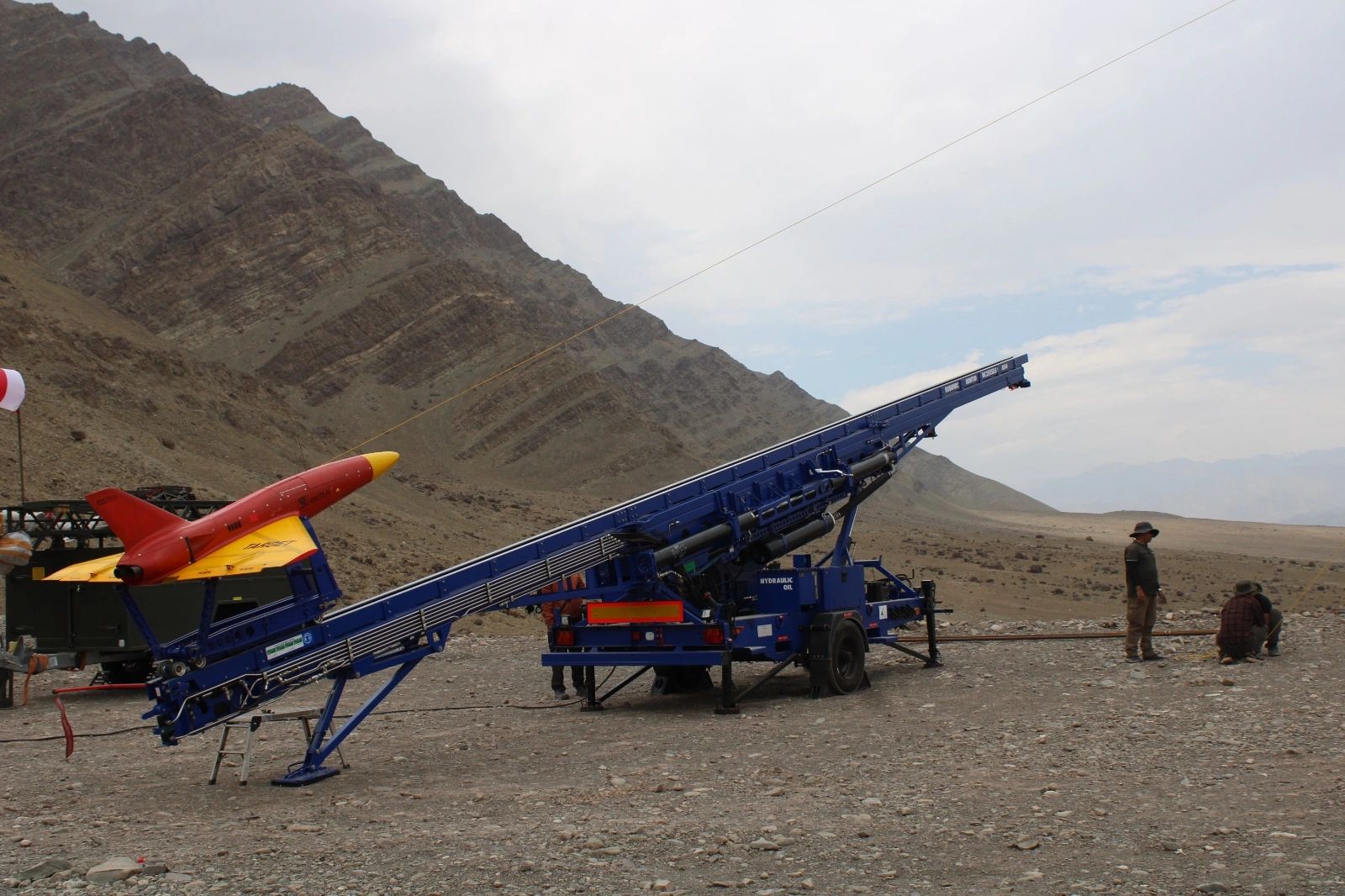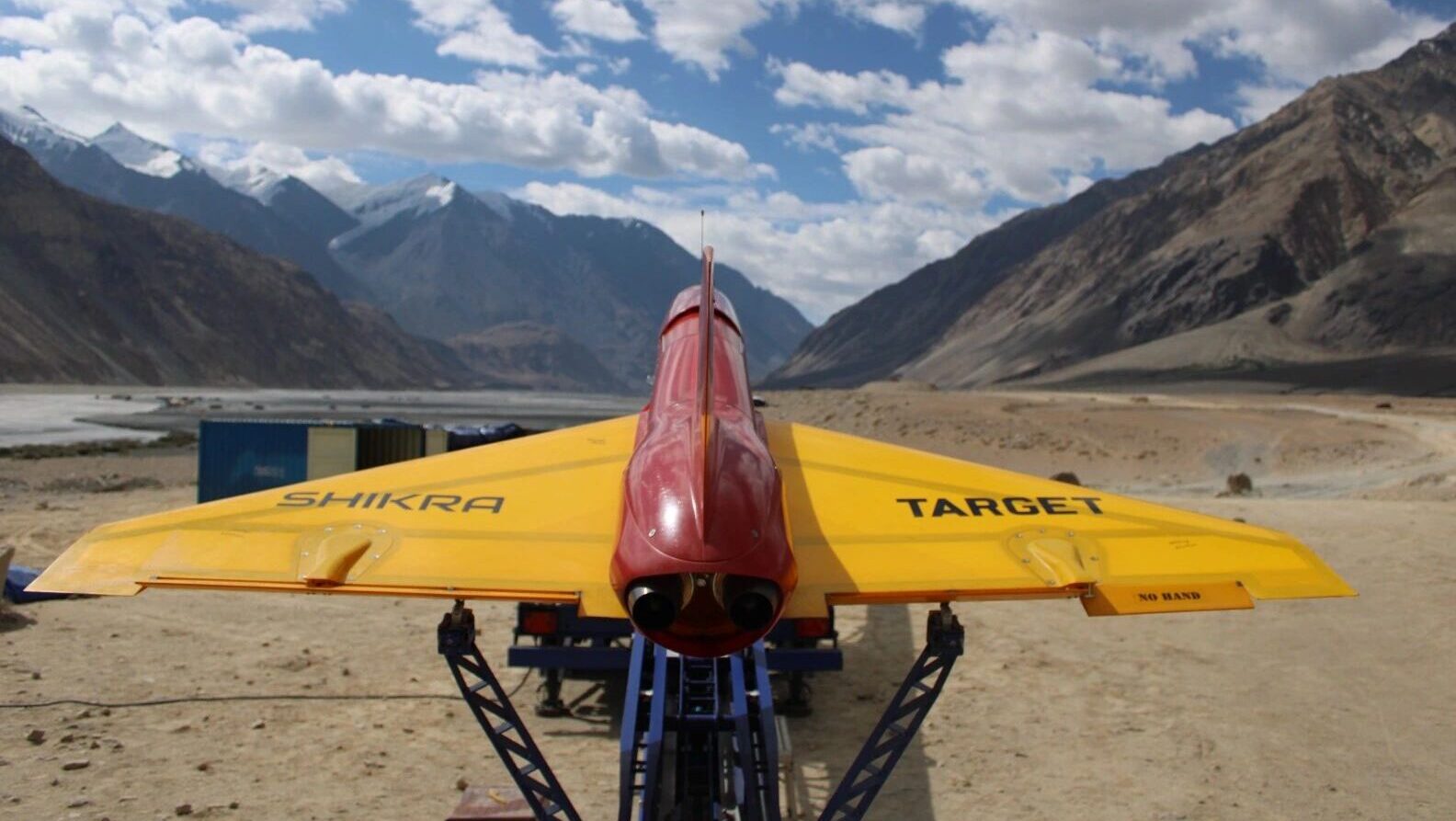In a major boost to India’s guided missile capabilities and indigenous test infrastructure, the Indian Army and DRDO have successfully test-fired the Akash 1P surface-to-air missile system against high-speed, high-altitude targets in the rugged terrains of Ladakh at an altitude of 15,000 feet.
What is noteworthy about this test is the indigenous SHIKRA aerial target drone’s performance, designed and operated by Anadrone Systems Pvt Ltd (ASPL), which helped extensively in proving the real-time engagement capability of Akash 1P under harsh operational conditions.
Indigenous Tech Meets Himalayan Extremes
The test was carried out in the high-altitude regions of Ladakh where fluctuating wind shear, thin air, and sub-zero temperatures routinely challenge aerodynamic stability and electronic control systems. Despite this, the SHIKRA target drone performed flawlessly, flying pre-programmed high-speed sorties to simulate hostile aerial intrusions.
The SHIKRA HSHA (High Speed High Altitude) target drone was developed entirely in India by ASPL, a leading private defence manufacturer specialising in target systems. During the test, the SHIKRA maintained precise flight trajectories, validating both its design resilience and control algorithms in a hostile environment.

“This was not just a test of the Akash Prime missile. It was a test of the entire ecosystem, from guidance, propulsion, and warhead to the capability to reliably simulate threats at altitude. SHIKRA’s performance was critical to this success,” a senior DRDO official told this publication under condition of anonymity.
Akash 1P: Upgraded, Indigenous, and Lethal
Akash 1P is the enhanced version of the Akash surface-to-air missile system, equipped with enhanced seeker technology, improved low-temperature capability, and higher target discrimination. DRDO has developed the Akash 1P, which can neutralize a range of airborne threats such as fighter aircraft, cruise missiles, and UAVs.
During this test, Akash 1P effectively acquired, locked, andhit the SHIKRA drone at operational altitudes in real-time, representing a major breakthrough in India’s layered air defence system.
The test also highlights the increasing focus of the armed forces on test-deploying and proving equipment in actual operational conditions, especially in forward sectors where operational deployment is most probable. Ladakh, being at high altitude and at a strategic position, provides the perfect test site for such assessments.
Anadrone Systems: Silent Enabler of Missile Validation
Headquartered in India, Anadrone Systems Pvt Ltd has emerged as a critical enabler in India’s defence ecosystem by developing indigenous aerial target platforms for live-fire trials. The company’s SHIKRA series is designed to simulate a wide range of threats, both subsonic and supersonic, at variable altitudes.
Operating at over 15,000 feet is no small feat for unmanned systems, especially when performance must be repeatable and precise. The SHIKRA’s performance in these recent tests not only validated its design but reinforced its reliability in high-altitude, low-pressure environments.
Sources at ASPL confirmed that the sortie was one of the highest ever flown by an Indian-made aerial target system. “Executing a high-speed aerial profile at this altitude with zero deviations is the result of years of R&D. We’re proud to support India’s guided weapons development with fully indigenous systems,” an ASPL spokesperson said.
Strategic Implications: Aatmanirbhar Bharat in Action
This test marks more than just another missile success story, it showcases the maturity of India’s indigenous defence capabilities, especially in the domain of test & validation infrastructure. Unlike earlier decades where foreign drones or test targets were often leased or imported for validation trials, India is now deploying home-grown platforms developed and manufactured entirely within the country.
The convergence of a domestically developed missile system (Akash 1P) and an indigenous aerial target (SHIKRA) demonstrates an evolving defence industrial base that is rapidly achieving self-reliance under the Aatmanirbhar Bharat vision.
DRDO officials say this milestone paves the way for future trials involving more advanced interceptors, hypersonic testbeds, and swarming UAV simulations, all using indigenous validation platforms.
Indigenous and Cost-Effective
As geopolitical tensions remain high and threat landscapes evolve, India’s need for credible, layered, and rapidly deployable air defence systems continues to grow. The Akash 1P and SHIKRA pairing provides a proof-of-concept for future deployments that are indigenous, cost-effective, and performance-verified in India’s toughest terrains.
For the armed forces and defence scientists involved, the message is clear: India no longer just builds missiles, it builds the systems that test them too.
Also Read: Swiggy Launches High Protein Meals in 30 Indian Cities


























